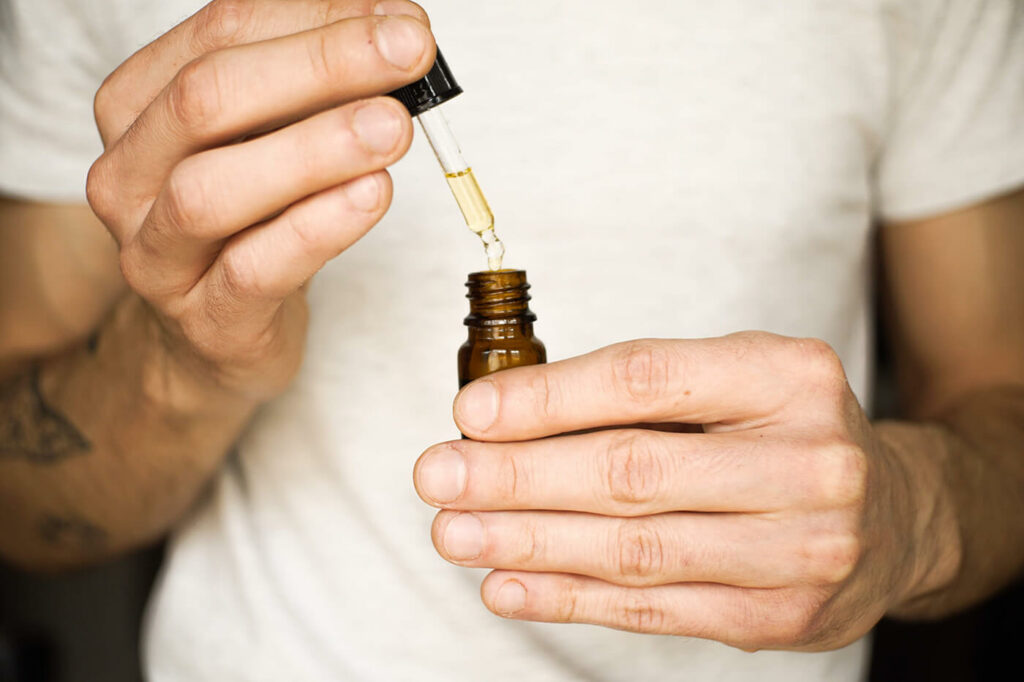Top 5 Potential CBDA benefits
Like other cannabinoids, CBDA is able to interact with our endocannabinoid system, but it doesn’t bind to our cannabinoid receptors like some other cannabinoids do. Instead, CBDA exerts its influence indirectly by inhibiting cyclooxygenase-2 (COX-2) enzymes and serotonin reuptake.
1. CBDA to reduce inflammation and inflammatory pain
One of the areas that has the most research so far is using CBDA for pain, especially inflammatory pain.
COX-2 enzymes are associated with inflammation at the site of an injury or infection and in a 2008 study, CBDA was shown to inhibit these enzymes in a similar fashion to aspirin or other non-steroidal anti-inflammatory drugs (NSAIDs). CBDA was shown to reduce inflammation, as well as any pain associated with the inflammation.
Interestingly, CBDA looks chemically similar to salicylic acid (aspirin) and other NSAIDs as it carries the same carboxyl group of atoms that ultimately define it as acidic (as we discussed previously, when CBDA is decarboxylated it loses this carboxyl group and becomes CBD).
Three years later another study contradicted this research as it showed that it wasn’t the COX-2 enzyme that CBDA inhibited, but that it was possibly the COX-1 enzyme, prompting a need for further research into CBDA’s mechanisms of action.
A 2018 research paper also showed that both CBDA and THC potently reduced pain behavior and inflammation in rodent models of inflammatory pain. Their findings suggested that the effects were mediated by activation of the TRPV1 receptor, as the anti-hyperalgesia effects were blocked when tested alongside another compound that blocked this particular receptor.
The team also noted that when ineffective doses of CBDA and THC were combined, there was an enhanced anti-hyperalgesia and anti-inflammatory effect. These “amplification” effects found in CBDA could potentially be very useful in treating people with low-dose THC in the future, so that people can enjoy the same results as high-dose THC but without any unwanted intoxication.
2. CBDA to alleviate vomiting and nausea
CBDA has also been shown to possess antiemetic properties, preventing vomiting and suppressing nausea in rats. It also enhanced the effects of other anti-nausea treatments that targeted the 5-HT3 receptor, such as ondansetron (OND), which is an antagonist of 5-HT3 receptors
One piece of research also showed that by enhancing serotonin receptor 5-HT1A activation, CBDA displayed significantly greater potency than CBD at inhibiting vomiting. The team of researchers believe that CBDA holds great promise as a treatment for nausea and vomiting, including anticipatory nausea for which there is no current treatment available.
3. CBDA to reduce symptoms of anxiety and depression?
The neuroprotective, anxiolytic, and antidepressant properties of CBD are thought to be mediated by the 5-HT1A receptor. Since CBDA has been shown to exhibit 100-fold greater affinity for this receptor, this has prompted some companies (that are selling CBDA products), to claim that CBDA may also possess similar but more potent effects in these areas too.
However, while the theory sounds promising there is absolutely no research that I was able to find on CBDA and anxiety and/or depression to support these claims. But watch this space.
4. CBDA as an anti-convulsant
The anti-convulsant effects of CBDA were recorded in a 2019 research paper. According to the team, CBDA was highly brain penetrant and exhibited significant anticonvulsant properties in a mouse model of Dravet syndrome.
The paper points out that this provides further proof that there are many compounds within the cannabis sativa plant that are anticonvulsant, not just CBD. In agreement, I also think that this provides even further evidence for the existence of the entourage effect and that we should all be taking full-spectrum (or at least broad-spectrum) products.
5. CBDA to treat and prevent the coronavirus
Just last week, a research paper was published that showed two hemp compounds, CBDA and CBGA, were able to prevent the SARS-CoV-2 virus from infecting human cells.
This research is purely lab-based (it was conducted in a petri dish) at this point, so while it’s very exciting, like all of the other research into CBDA, more research is needed before we can say anything for sure.
CBDA was shown to bind to the spike protein that sits on the surface of the virus. In order to infect us, the SARS-CoV-2 virus must first latch onto one of our ACE2 cells (found abundantly throughout our lungs, heart, kidney, and intestines) and once latched on the spike protein (also the target for vaccinations and antibody therapy) then acts like a key sliding into a lock.
Once the “key” is in, the virus is then able to enter (infect) the cell and multiply. If CBDA and CBGA have previously bound to this spike protein, then the “key” no longer fits the “lock”, so the virus is effectively disarmed as it’s unable to enter the cell.
The team of researchers have said that these compounds may prove to be helpful in treating the virus (to prevent it spreading and getting worse), as well as in preventing infection in the first place.
Unfortunately, nothing is known about the doses that might be needed (or anything like that), because the research is nowhere near that stage in development. And it’s important to remember that what happens in a petri dish doesn’t always replicate in the human body.







